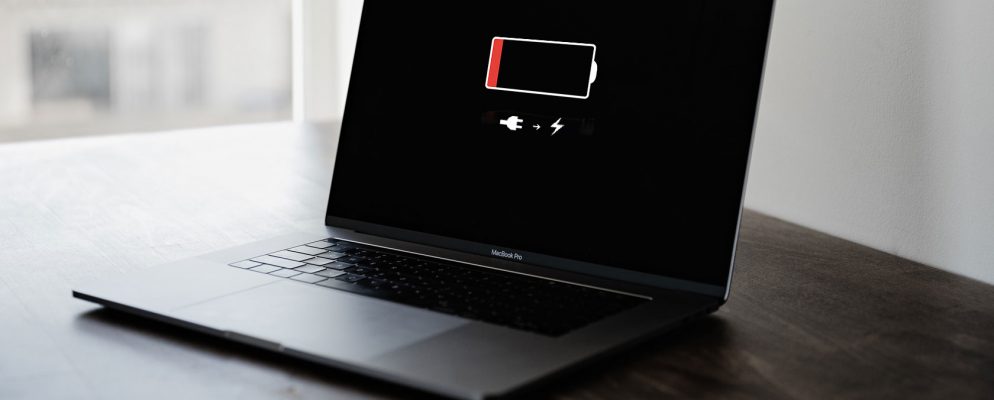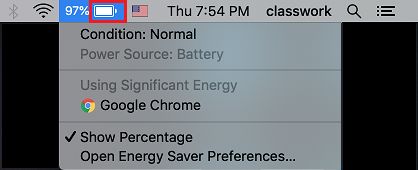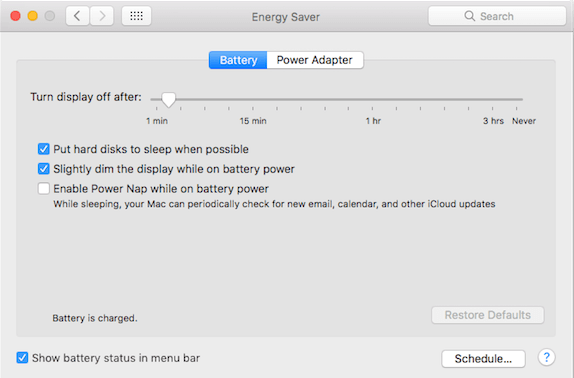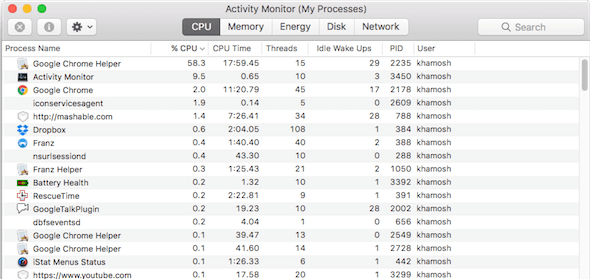How to Improve Battery Life on Your Mac
- Jul 24, 2019

Experiencing battery issues on your Mac? Wondering how to improve the battery life? Generally speaking, the battery life depends on how you use your Mac and how you configure power consuming services on the system. In this post we will share several tips to help diagnose and improve your Mac’s battery life. Read on to know more.
1.Check your battery condition
If your Mac’s battery drops quickly in a short usage time, you should check the overall condition by clicking the battery icon in the top menu bar while holding down the Option key on your keyboard. The condition of your battery will appear, and if it shows Normal, your battery condition is still good. But if it shows Replace Soon, well, you should take your Mac to authorized stores or contact AppleCare for assistance.

2.Update to the latest macOS
Certain versions of macOS may exist some bugs that affect the battery life on certain Mac models. The system updates often include advanced energy-saving technologies, and you should check the available updates and see if your system is up-to-date.
To install the update, click the Apple icon and then choose Software Update.
3.Customize Energy Saver Mode
To help maximize your Mac’s battery life, try to utilize the built-in Energy Saver mode by clicking Apple menu and choose System Preferences > Energy Saver.

In the Energy Saver, you can adjust to reduce the time for how long your Mac’s screen stays awake when you are not using it. Meanwhile, you can check the options below to “slightly dim displays when on battery power” and “put hard disks to sleep when possible”, while uncheck the option labeled “Enable Power Nap while on battery power” to turn off Power Nap. Besides, don’t forget to check the option labeled “Show battery status in menu bar” so you can monitor the battery charge level.
4.Control power-consuming apps
If the battery percentage drops quickly when you are running certain apps on the Mac, you can launch Activity Monitor to find out if any rogue or large apps are eating up battery. To do so, first run Activity Monitor through Spotlight or Finder’s Applications/Utilities folder. In the CPU tab, click the CPU below to list the running processes in the CPU percentage order. If an app is taking up an unusually large stake of CPU processes, try to select it and click Quit button in the upper left corner.

5.Turn off unnecessary services
Apart from closing the open apps that are not currently being used, you can try to turn off unnecessary services, such as disabling Bluetooth by clicking Bluetooth icon and choosing Turn Bluetooth Off, adjusting the brightness of the screen by pressing the keyboard shortcut, disabling keyboard backlight in daylight, turning off Dynamic Desktop from System Preferences, or switching to Dark Mode at nights……
Popular Posts
- What Kind of Programs do You Think are Necessary in Windows 10?
- What’s SpyHunter and How to Fix the File Being Quarantined
- How to Forcibly Remove a Program That Won’t Uninstall in Windows
- 3 Tips to Remove a Program that Won’t Uninstall
- How To Uninstall Applications On Windows 10 – Program Removal Guides
- Tutorial: How to Remove & Uninstall Programs / Applications on Windows 7
Comments
You must be logged in to post a comment.